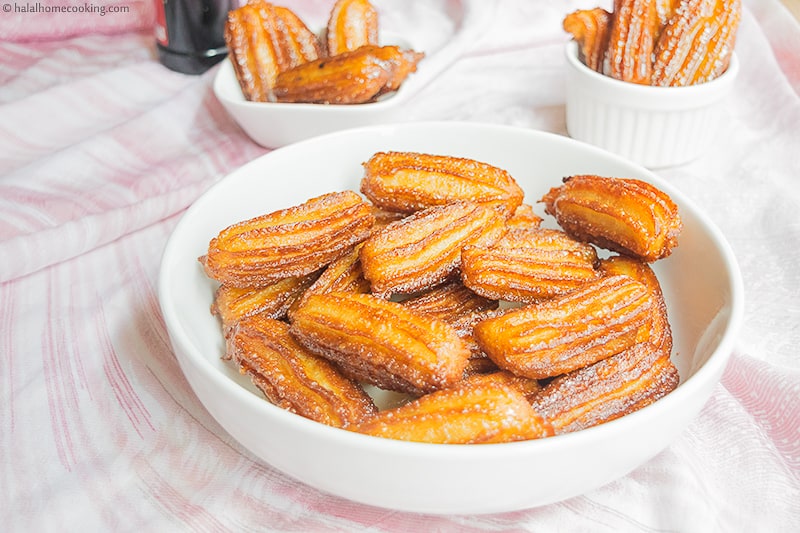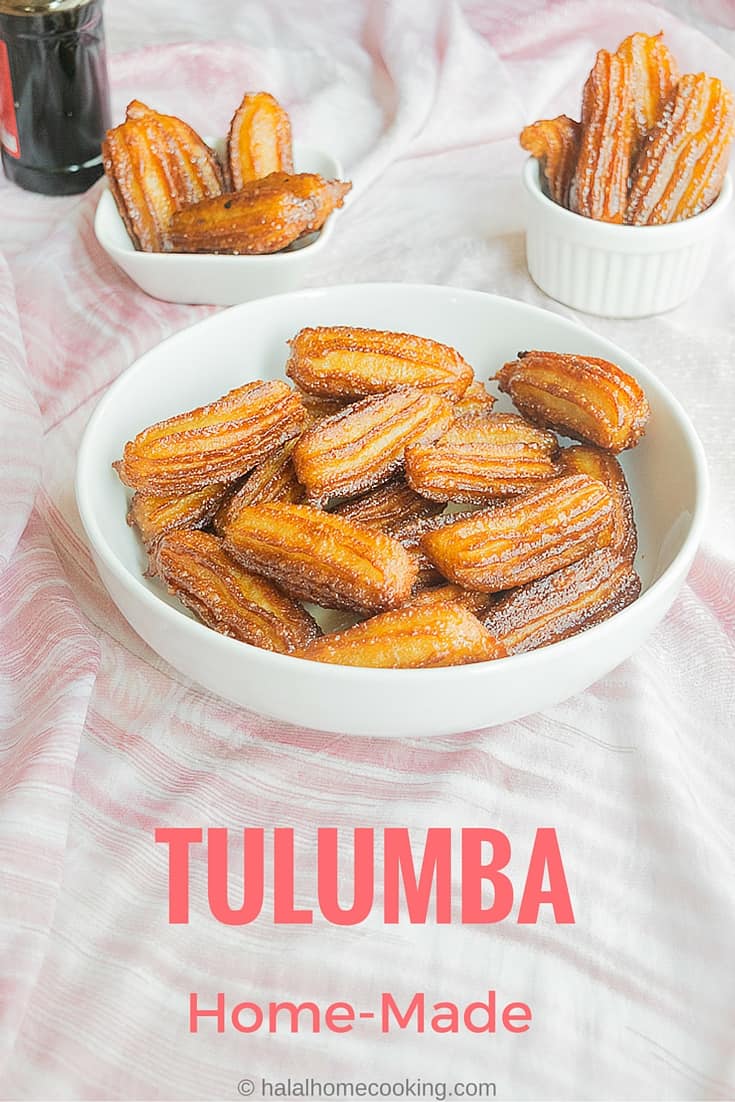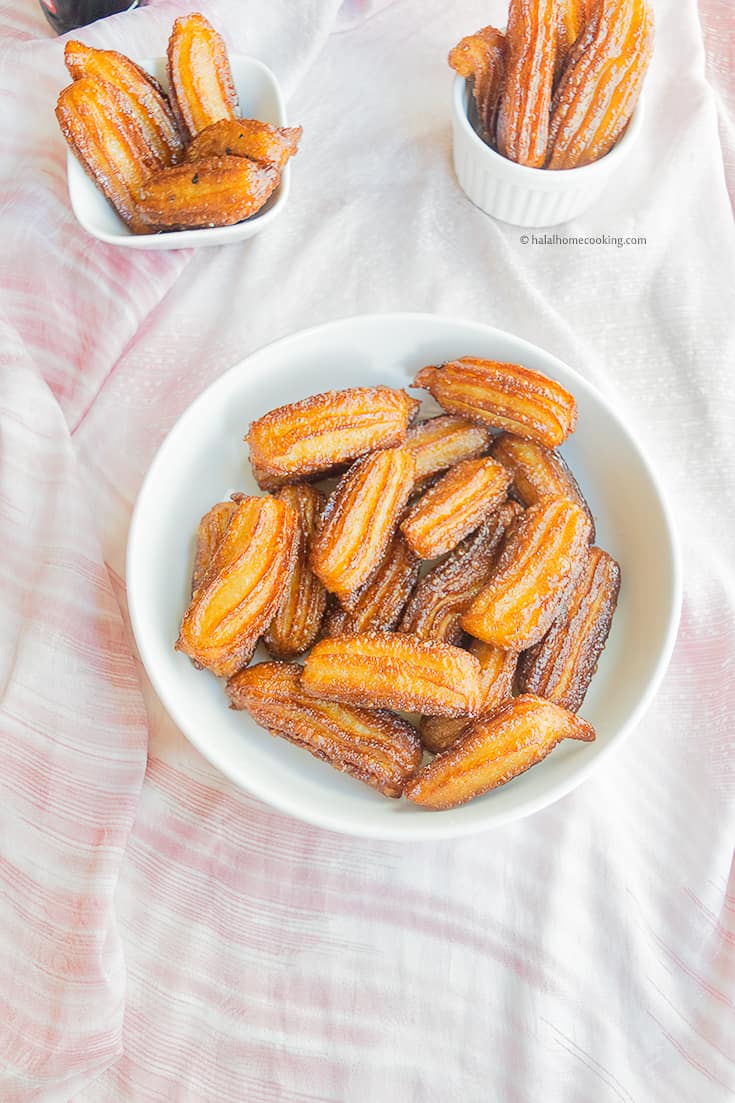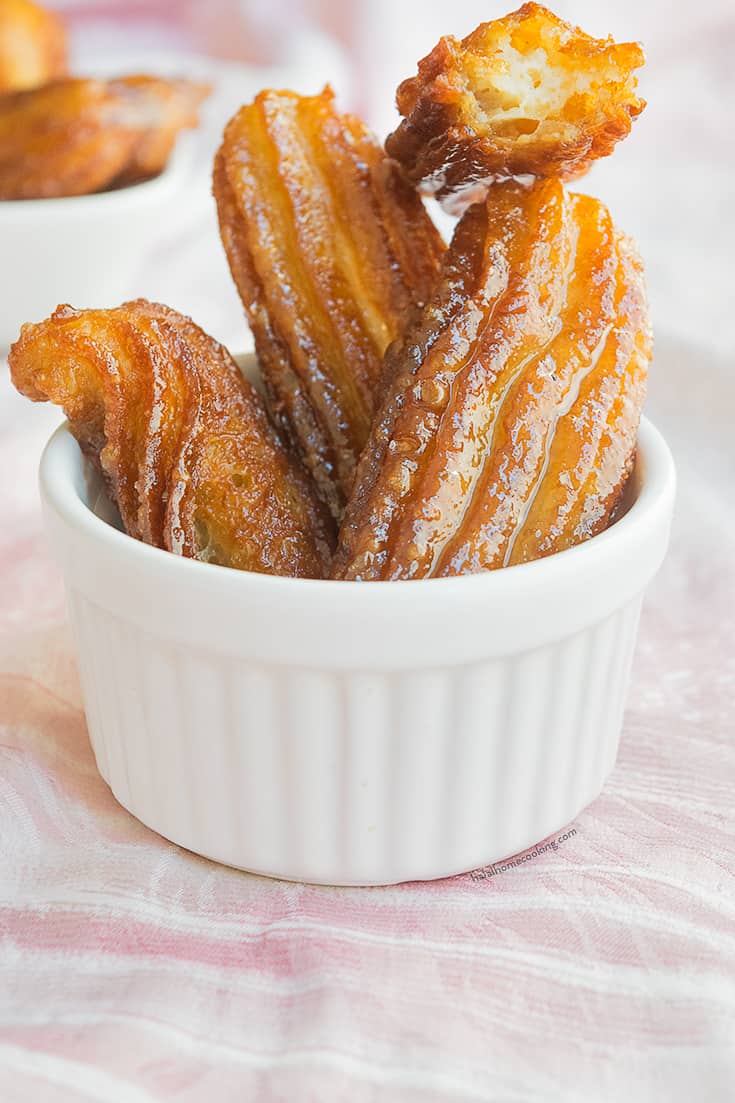Home-made Tulumba: Turkish deep-fried choux pastry fluted fritters soaked in honey or syrup.
Tulumba are sold in Ethnic food shops around Britain, particularly those that specialise in Middle Eastern and Greek ingredients.
I remember when my husband first came to the UK some seven and a bit years ago, he wasted no time exploring the cities surrounding the little town we lived and of which I grew up in.
He would go out mainly to buy halal meat because where we lived there weren’t any halal butchers and very few Muslims. One day though he brought home a few Tulumba, at that point I didn’t know what they were but thought they looked funky.
With sticky but crisp ridges and soft syrup soaked centres they became an instant favourite and I would often ask him to bring me them when he went to this one city.
Three years ago we moved to a city with a larger Muslim community and plenty of halal butchers therefore, he no longer visits ‘Tulumba city’ and I’ve taken to recreating them at home. Truth be told I’ve tried home-making Tulumba many times before we even moved here but without any real success.
The Tulumba I share today are the closest I’ve ever got to replicating the shop-bought and in most cases I’m assuming the factory made version, at home.
Home-made Tulumba is not as long or fat as the shop-bought version. A large icing bag fitted with a wide closed-star tip replaces the machine.
Tulumba literally means “pump” in Turkish.
I’m assuming (again) that it’s named as such because of the force pump-like method the machine does squeezing the thick dough out. Let me tell you, it does take a lot of force / pressure to squeeze the dough out of a piping bag too. Which is why I’ve used a coupler on the icing bag, as many attempts in the past have gone by the wayside when I’ve forced the nozzle out of the bag before the dough.
As the dough is very thick and sticky I recommend using a disposable piping bag, then when you have finished simply throw it in the bin and save on the big clean up.
I took the easier and somewhat healthier route of soaking my Tulumba in runny honey instead of syrup. I loosened the honey by warming it a little over a low heat before adding the hot Tulumba. You can add a squeeze of lemon juice or a tablespoon of floral water to loosen the honey further (and for extra flavour) if your honey is especially thick.
There isn’t much difference in taste when soaking this churro-like dessert in light flavoured honey as opposed to syrup, but If you would like to make the traditional syrup the recipe can be found on this YouTube video (to avoid the music, mute the sound). Said YouTube video is also the original source for my Tulumba recipe too.
Tulumba
According to wikipedia this sweet can also be found in Iran as bamiyah, in Egypt as balah ash-sham and in the Arab world as asabe Zainab.
There are of course slight variations in ingredients, shape and preparation method but in essence they are the same fried-sweet. I would say Tulumba most resemble the balah ash-sham.
The main difference in the Turkish recipe is a little coarse semolina and corn flour(starch) are added before the eggs. The coarse semolina allows the Tulumba to take on more of that honey/syrup and give it it’s defining interior texture.
I took photos almost immediately after removing the Tulumba from the honey, when they hadn’t taken on their full capacity. The good news is they keep on soaking up the honey from the surface and were fully soaked an half an hour or so later.
Tulumba differ to Spanish churros in that they are soaked in a liquid sweetener after frying, whereas churros are dusted with icing sugar and/or served with chocolate sauce.
Talking of liquid sweeteners, I used one jar of honey and as that ran out towards the end I turned to the only other liquid sweetener I had in my cupboard, pomegranate molasses. They weren’t inedible by any stretch of the imagination, kinda sweet and sour, but I definitely preferred the ones with honey and so I’ve suggested using two jars in the recipe below.
This home-made version doesn’t quite beat the original but they do come very close. I had trouble cooking them in warm oil instead of hot, they just soaked up the oil and fell apart. I turned up the heat for my next batch and thus we have some rather darker than usual, irregular shaped Tulumba that are still irresistible.
My children and I couldn’t get enough of these fluted fritters, my husband hardly got a look in when he got home from work that evening. I can see Tulumba becoming a problem, an irresistibly pleasant problem now I know how to make them at least half decently.
My home-made Tulumba are best eaten the same day, the few that remained the following can only be described as soggy. So make them and quickly eat them between yourselves at home or gift some to neighbours, friends etc.
Tulumba
Prep Time: 1 hour
Cook Time: 40 minutes
Total Time: 1 hour, 45 minutes








